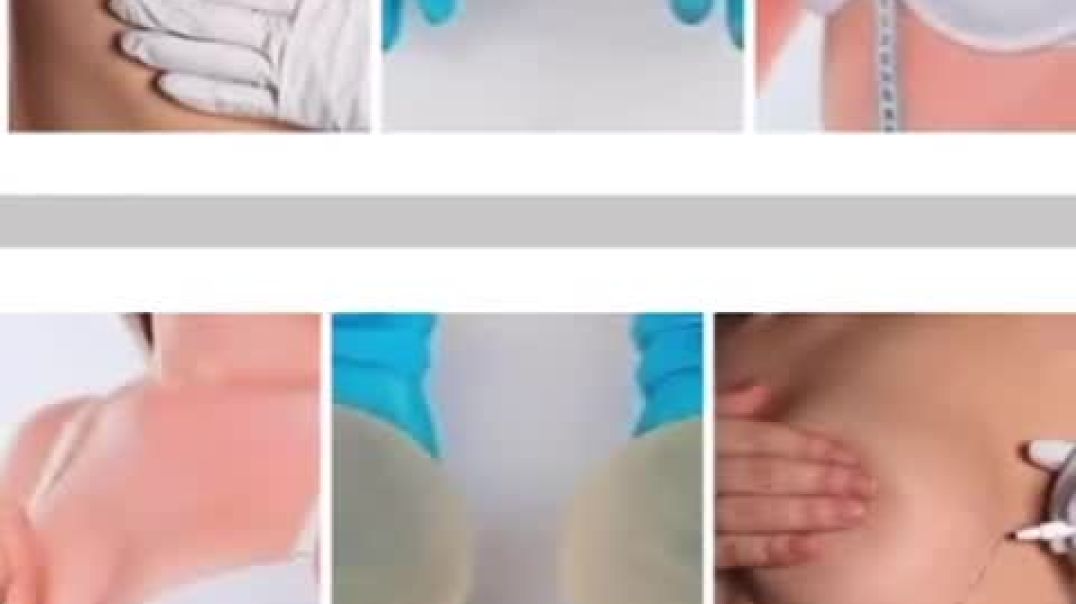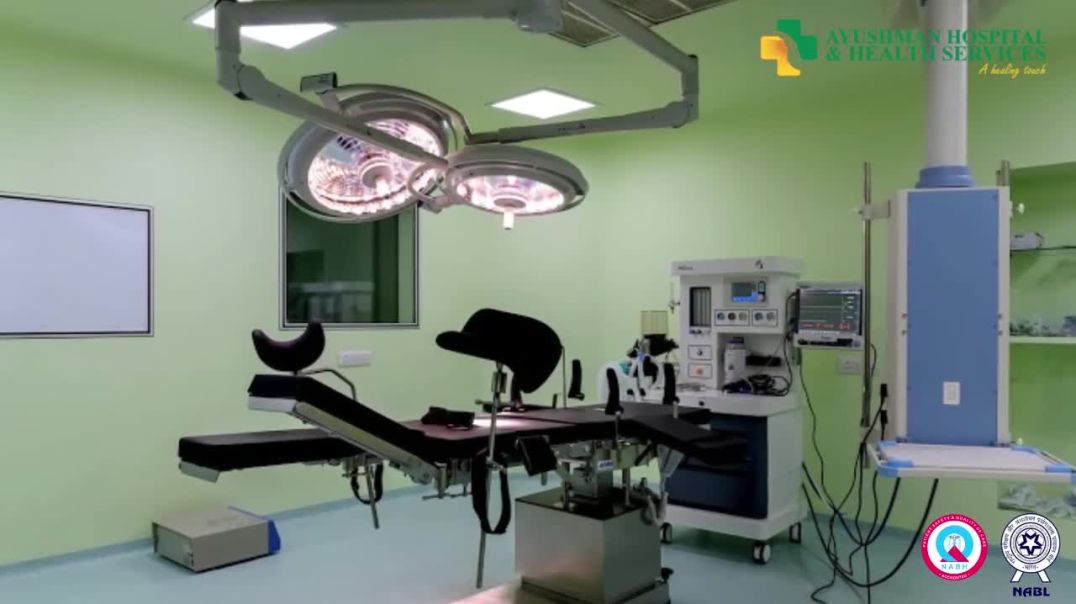Top videos
Welcome to the official YouTube channel of Synergy Wellness Chiropractic & Physical Therapy. We are a multi discipline chiropractic and physical therapy practice located in the East Greenwich Village in Manhattan, New York City,
Schedule your new patient visit with us and start feeling better faster by calling
212-533-4900 or visit us on the web at www.SynergyWellnessNY.com.
If you've gotten any help from any of these videos we want to hear about your experience
***REVIEW US ON GOOGLE HERE:***
https://g.page/r/CX3qS6p7bjwPEAI/review
Follow Synergy Wellness Chiropractic and Physical Therapy on Facebook, Instagram and Twitter
Facebook: https://www.facebook.com/SynergyWellnessNY/
Instagram: https://www.instagram.com/synergywellnessnyc/
Twitter: https://twitter.com/synergyny
CHECK OUT OUR NEW CHANNEL WITH YOUTUBE SHORTS
Dr. David Kulla, DC, CN, CEAS ll is a well known Chiropractor and CEO of Synergy Wellness Chiropractic and physical therapy working for organizations as a certified ergonomics assessment specialist for the united nations, morgan stanley, goldman sachs, broadway actors, dancers, collegiate and professional athletes with experience spanning over 2 decades in the New York Metropolitan area as a celebrity chiropractor. If you are looking for an experienced, skilled, knowledgable chiropractor nearby in nyc , we are just a subway or cab ride away.
#SHORTS thanks for watching our youtube shorts!
Dr. David Kulla and the Synergy Wellness team in lower manhattan near gramercy park offers Certified Flexion Distraction Technique by our Chiropractor. Dr. Kulla is also certified in Neurological testing or electrodiagnostic testing (EMG and NCV Testing), and a CCEP Certified Chiropractic Extremities Practitioner adjusting non spinal joints like shoulders, elbows, wrists, hands and fingers. Dr. Kulla also adjusts hips, knees and ankles and feet.
At Synergy Wellness Chiropractic & Physical Therapy New York City office we pride ourselves in patient focused care. We offer other services like custom orthotics, cold laser therapy and our channel features real patients , real experiences and any NYC actors, athletes and celebrities have given us permission to be featured in our videos.
for our videos.
You will hear LOUD CRACKS or Chiropractic Adjustments with loud CRACKING, The LOUD ASMR CRACKS you hear after a CHIROPRACTIC ADJUSTMENT is merely a byproduct of the joint cavitating, gas bouncing off synovial fluid making that extremely loud chiropractic crack or cracking noise that many people find soothing to watch (aka ASMR). We hope you enjoy our chiropractic and physical therapy youtube channel and spread the word! Thanks for TUBIN in!
Disclaimer: don't try any of these maneuvers or techniques at home on yourself or loved ones unless specifically told it ok to do on yourself or others safely.
SOME OTHER SEARCHABLE TERMS USED TO FIND US:
chiropractor in new york city, nyc chiropractor, physical therapist in New York City, NYC physical therapist, chiropractor manhattan area, chiropractor gramercy, east village chiropractic, midtown chiropractor, chiropractor in tribeca, chiropractor in greenwich village, chiropractor in soho, flexion distraction chiropractor, physiotherapy in nyc, nyc physiotherapist, spinal decompression in nyc, cold laser therapy in nyc, costochondritis, hiatal hernia, hiatal hernia hook, hiatal hernia home treatment, costochondritis chest pain, rib pain, sternum pain
This covers some of the benefits, side effects and potential complications of LASIK Eye Surgery! Learn about the pros and cons of laser eye surgery and some pro tools to help you along the way.
📒 Show Notes and Resources 📒
LASIK Affordability Calculator
http://www.refractivealliance.....com/lasik-affordabil
Patient Guide to Refractive Surgery
https://www.aao.org/Assets/e89....0eb55-9bfa-465a-8422
Some Reference Articles for you folks who like to read
https://www.healio.com/ophthal....mology/journals/jrs/
Dry Eye Playlist
https://www.youtube.com/playli....st?list=PLzi60fSuOmP
---------My Cameras and Video Gear -------
https://kit.co/DoctorEyeHealth
DISCLAIMER: Some of the links in this description are "affiliate links", a link with a special tracking code. This means if you click on an affiliate link and purchase the item, I may receive an affiliate commission. Regardless, I only recommend products or services I believe will add value to viewers.
======================================================
Let’s Connect! Dr. Allen on Social Media:
https://instagram.com/doctoreyehealth
https://www.facebook.com/doctoreyehealth
https://twitter.com/doctoreyehealth
For Collaborations please email me: DoctorEyehealth@gmail.com
MEDICAL ADVICE DISCLAIMER: All content in this video and description including: information, opinions, content, references and links is for informational purposes only. The Author does not provide any medical advice on the Site. Accessing, viewing, reading or otherwise using this content does NOT create a physician-patient relationship between you and it’s author. Providing personal or medical information to the Principal author does not create a physician-patient relationship between you and the Principal author or authors. Nothing contained in this video or it’s description is intended to establish a physician-patient relationship, to replace the services of a trained physician or health care professional, or otherwise to be a substitute for professional medical advice, diagnosis, or treatment. You should consult a licensed physician or appropriately-credentialed health care worker in your community in all matters relating to your health.
About:
In this video you will find a laser eye surgery review. We cover the laser eye surgery procedure and how lasik eye surgery works. A large emphasis is on the benefits of laser eye surgery as well as potential side effects and complications. We even touch on the topic of lasik eye surgery gone wrong.
#lasikeyesurgery #lasiksurgery #lasik
Contact us to find out more http://www.londonvisionclinic.com/contact-us/ Mr Carp explains the risks involved in losing sight as being extremely rare. Only 1 in 5 million may lose sight in one eye.
In this video, Dr. Robert Rozbruch, chief of Limb Lengthening and Complex Reconstruction at Hospital for Special Surgery performs an osseointegration after a primary amputation. The patient, a 40 year old woman, had chronic nerve pain and compromised function of her residual limb.
For more information, visit: https://www.limblengthening.com/
https://www.hss.edu/limblengthening
https://www.hss.edu/LSARC
https://www.facebook.com/limblengtheningNYC
https://www.instagram.com/limblengthening
https://www.twitter.com/limblengthen
https://www.youtube.com/channe....l/UC-JL_X6ALjZXiXtcP
key words: Osseointegration, Amputee, Amputation, Limb Replacement, Tibia, Osseointegration
Learn Basic Laparoscopic Surgery, the components of a laparoscopic surgical setup, optimal positioning and ergonomics in laparoscopic surgery, and much more. Check out the full course for free here: https://www.incision.care/free-trial
What is Laparoscopic Surgery:
Laparoscopic surgery describes procedures performed using one or multiple small incisions in the abdominal wall in contrast to the larger, normally singular incision of laparotomy. The technique is based around principles of minimally invasive surgery (or minimal access surgery): a large group of modern surgical procedures carried out by entering the body with the smallest possible damage to tissues. In abdominopelvic surgery, minimally invasive surgery is generally treated as synonymous with laparoscopic surgery as are procedures not technically within the peritoneal cavity, such as totally extraperitoneal hernia repair, or extending beyond the abdomen, such as thoraco-laparoscopic esophagectomy. The term laparoscopy is sometimes used interchangeably, although this is often reserved to describe a visual examination of the peritoneal cavity or the purely scopic component of a laparoscopic procedure. The colloquial keyhole surgery is common in non-medical usage.
Surgical Objective of Laparoscopic Surgery:
The objective of a laparoscopic approach is to minimize surgical trauma when operating on abdominal or pelvic structures. When correctly indicated and performed, this can result in smaller scars, reduced postoperative morbidity, shorter inpatient durations, and a faster return to normal activity. For a number of abdominopelvic procedures, a laparoscopic approach is now generally considered to be the gold-standard treatment option.
Definitions
Developments of Laparoscopic Surgery:
Following a number of smaller-scale applications of minimally invasive techniques to abdominopelvic surgery, laparoscopic surgery became a major part of general surgical practice with the introduction of laparoscopic cholecystectomy in the 1980s and the subsequent pioneering of endoscopic camera technology. This led to the widespread adoption of the technique by the early- to mid-1990s. The portfolio of procedures that can be performed laparoscopically has rapidly expanded with improvements in instruments, imaging, techniques and training — forming a central component of modern surgical practice and cross-specialty curricula [2]. Techniques such as laparoscopically assisted surgery and hand-assisted laparoscopic surgery have allowed the application of laparoscopic techniques to a greater variety of pathology. Single-incision laparoscopic surgery, natural orifice transluminal endoscopic surgery, and minilaparoscopy-assisted natural orifice surgery continue to push forward the applications of minimally invasive abdominopelvic techniques; however, the widespread practice and specific indications for these remain to be fully established. More recently, robotic surgery has been able to build on laparoscopic principles through developments in visualization, ergonomics, and instrumentation.
This Basic Laparoscopic Surgery Course Will Teach You:
- Abdominal access techniques and the different ways of establishing a pneumoperitoneum
- Principles of port placement and organization of the operative field
- Key elements of laparoscopic suturing, basic knotting and clip application
Specific attention is paid to the following hazards you may encounter:
- Fire hazard and thermal injury
- Lens fogging
- Contamination of insufflation system
- Complications from trocar introduction
- Limitations of Veress needle technique
- Limitations of open introduction technique
- Complications of the pneumoperitoneum
- Gas embolism
- Mirroring and scaling of instrument movements
- Firing clip applier without a loaded clip
The following tips are designed to improve your understanding and performance:
- Anatomy of a laparoscope
- Checking for optic fiber damage
- "White balance" of camera
- Checking integrity of electrosurgical insulation
- Access at Palmer's point
- Lifting abdominal wall before introduction
- Confirming position of Veress needle
- Umbilical anatomy
- Identification of inferior epigastric vessels under direct vision
- Translumination of superficial epigastric vessels
- Selection of trocar size
- Aiming of trocar
- Working angles in laparoscopic surgery
- Choice of suture material
- Instruments for suturing
- Optimal ergonomics for suturing
- Extracorporeal needle positioning
- Optimal suture lengths
- "Backloading" needle
- Intracorporeal needle positioning
- Hand movements when suturing
- Optimal positioning of scissors
- Extracorporeal knot tying
- Visualization of clip applier around target structure
- Common clip configurations
This medical animation shows laparoscopically assisted gallbladder removal surgery, or cholecystectomy. The animation begins by showing the normal anatomy of the liver and gallbladder. Over time, gallstones form within the gallbladder, blocking the cystic duct, and causing the gallbladder to become enlarged and inflamed. The procedure, sometimes called a "lap-chole", begins with the insertion of four trocar devices, which allow the physician to see inside the abdomen without making a large incision. Air is added to the abdominal cavity to make it easier to see the gall bladder. Next, we see a view through the laparascope, showing two surgical instruments grasping the gallbladder while a third severs the cystic duct. After the gallbladder is removed, the camera pans around to show that the cystic artery and vein, have already been clipped to prevent bleeding.
Item #ANIM026
Product demonstration video for the Cardinal Health™ Laparoscopic Abdominal Drape (cat. no. 9438)
How did Mr Bean get himself into pretending to be a doctor?
Linen Changes (with Patient in Bed)- Nursing Skills
FREE Nursing School Cheat Sheets at: http://www.NURSING.com
Get the full lesson on Patient Linen Changes here:
https://nursing.com/lesson/ski....lls-01-02-linen-chan
Get the full lesson on Bed Baths here:
https://nursing.com/lesson/skills-01-01-bed-bath/
Check out our new Nurse Care Plan Lessons here:
https://bit.ly/3BPRfPL
Get Access to Thousands of Lessons here:
https://nursing.com/courses/
Welcome to the NURSING Family, we call it the most supportive nursing cohort on the planet.
At NURSING.com, we want to help you remove the stress and overwhelm of nursing school so that you can focus on becoming an amazing nurse.
Check out our freebies and learn more at: (http://www.nursing.com)
Linen Changes (with Patient in Bed)- Nursing Skills
In this video, we’re going to show you how to change the linens with a patient in the bed. This might be after a bed bath or during incontinence care. So check out the bed bath video to see what got us up to this point. We love you guys! Go out and be your best selves today! And, as always, happy nursing!
Bookmarks:
0.05 Linen change introduction
0.16 Linen change supplies
0.30 Adjusting the patient/ sheet removal
1.00 Secure new fitted sheet
1.12 Pro tip
1.40 Roll patient back over
1.50 Repeat linen removal
2.02 Linen disposal
2.20 Wrinkle check
2.31 Reposition the patient for comfort
2.40 Covering the patient/ tuck-in
2.48 Pillowcase change (trick)
3.30 Making the patient comfortable
3.40 Linen change outro
Visit us at https://nursing.com/medical-disclaimer/ for disclaimer information.
NCLEX®, NCLEX-RN® are registered trademarks of the National Council of State Boards of Nursing, INC. and hold no affiliation with NURSING.com.
Tummy Tuck ( Classic Method ) : Surgery | 3D Animation
How long does tummy tuck last?
Tummy tuck results are considered permanent, insofar that the fat cells and skin removed during an abdominoplasty cannot grow back. Likewise, the internal sutures placed to repair abdominal muscles are designed to remain in place indefinitely.
What is tummy tuck surgery?
A tummy tuck — also known as abdominoplasty — is a cosmetic surgical procedure to improve the shape and appearance of the abdomen. During a tummy tuck, excess skin and fat are removed from the abdomen. Connective tissue in the abdomen (fascia) usually is tightened with sutures as well.
How much does tummy tuck cost?
How much does it cost? It can cost from about £5,000 to £10,000 to have an abdominoplasty in the UK, plus the cost of any consultations or follow-up care.
How painful is a tummy tuck?
A tummy tuck requires significant downtime
At the beginning, you will be fatigued, swollen and sore. It is normal to have moderate pain during these first several days, although this will steadily improve. It is vital to allow yourself time to focus on rest and healing.
What is the disadvantage of tummy tuck?
The cons of a tummy tuck include: A full abdominoplasty is a major operation with a considerable recovery. Expect to postpone strenuous activities for at least 6 weeks. Results take time.
Is tummy tuck more painful than C section?
That's something many women want to know. While patients have different experiences, most plastic surgeons would agree that a cesarean section is more painful than most tummy tucks.
- Tummy tuck
- Abdominoplasty
- Abdominal tuck
- Tummy tuck procedure
- Tummy tuck process
- Tummy tuck surgery
- Tummy tuck operation
- Tummy tuck video
- Tummy tuck recovery
- Tummy tuck before and after
- Abdominoplasty surgery
- Abdominal contouring surgery
- Postpartum tummy tuck
- Post pregnancy tummy tuck
- Mini tummy tuck
- Tummy tuck cost
- Tummy tuck risks
- Tummy tuck complications
- How long does a tummy tuck take
- Tummy tuck scarring
- Tummy tuck skin removal
- Tummy tuck muscle tightening
#tummytuck
#abdominoplasty
#plastic_surgery
#cosmetic_surgery
#body_contouring
#tummy_tuck_surgery
#surgery
#cosmetic_procedure
#beauty
#health
#fitness
#medical_animation
#3d_animation
#medical_video
#explainer_video
#education
Watch as Dr. Diaz performs a tummy tuck procedure on one of our patients!
A tummy tuck, also known as abdominoplasty, removes excess fat and skin and restores weakened muscles to create a smoother, firmer abdominal profile.
This patient as well wanted to receive liposuction in conjunction with the abdominoplasty. Liposuction sometimes referred to as "lipo" by patients, slims and reshapes specific areas of the body by removing excess fat deposits and improving your body contours and proportions.
The recovery time for a tummy tuck ranges anywhere from two to six weeks. The amount of recovery time you need depends on several factors of your surgery.
If you're interested in a consultation, contact us today! 424.235.6608
Liposuction in tummy tuck requires special planning and technique. I need to ensure that the blood circulation is well maintained for good healing. Yet proper liposuction is important to have a nice flat and contoured tummy.
#hdliposuction #tummytuck #lipoabdominoplasty #surgicalplanning #skinremovalsurgery #imeediatelyafter #plasticsurgeondubai #cocoonaclinic #drsanjayparashar #dubai
For more information visit www.drsanjayparashar.com
For more content, follow me on my social media
Instagram : https://www.instagram.com/drsanjayparashar/
Facebook : https://www.facebook.com/drsanjayparashar
This animation shows you how a tummy tuck is performed at Boerhaave Medical Centre. Curious? Watch the video!
Boerhaave Medical Centre sets itself the goal of providing the highest quality care. Quality not just in terms of treatment, but also in terms of our staff and the before and after care given. By providing thorough information and clear advice in advance, carefully supporting our patients through the procedure and caring for them afterwards, we believe this quality is assured.
Although we are one of the largest clinics in the Netherlands and have built up many years of experience, we continuously strive to improve. After all, the Boerhaave Medical Centre intends to remain a pioneer in the healthcare sector, by working in accordance with the latest medical findings and techniques both now and in the future.
We offer the highest standard of plastic surgery in our cosmetic care department. For 365 days a year, you can also come to us for non-surgical treatments, such as injectables, permanent hair removal and gastric balloons.
We have been awarded the ZKN quality mark and are certified to ISO 9001-2008 for giving advice and carrying out plastic surgery, including after care.
Visit our website for more information: https://www.boerhaave.com/all-....treatments/upperbody
Follow us:
Facebook: https://www.facebook.com/boerhaavemc
Google+: https://plus.google.com/+BoerhaaveNl-Kliniek
Pinterest: https://nl.pinterest.com/BoerhaaveMC/
Instagram: https://www.instagram.com/BoerhaaveMC/
#anatomy #histology #biology #bytesizemed
✨If you would like my help studying the structure of bones, check out my long-form video on it.
🔅Structure of Bone : https://youtu.be/MYInVEnnS_I
💫 For more videos like this, subscribe to my channel!
Byte Size Med: https://youtube.com/channel/UC....ZghvlgylH3r_CWfA18eF
📚Factual References & for Further Reading:
- DiFiore's Atlas of Histology
- Junqueira's Basic Histology
- Gartner's Concise Histology
- Openstax Anatomy and Physiology
https://openstax.org/details/b....ooks/anatomy-and-phy
- Openstax Biology
https://openstax.org/details/books/biology-2e
(The last two are links to open-source references. They are NOT affiliate links)
🌤 Note:
These are just a collection of my notes. So use them the way you would use borrowed notes from a friend. 📝
The images in this video are hand-drawn for illustration and explanation only.✍️ Hence, they may not be anatomically accurate. I am just one person making these videos. If there are any errors, that is unintentional. I try super hard to avoid them. Please let me know if you find any, so it gets clarified for other viewers. Science constantly evolves and changes. New discoveries are made everyday. So some of the information in these videos may become outdated. If you notice that, please let me know so I can update them.
⚡️Disclaimer:
These videos are NOT a substitute for a medical textbook. Textbooks are written by experts (which I do not claim to be), edited, proofread and referenced. Please use them.
The information has been sourced from multiple references as mentioned above. I draw all the pictures myself. But if I have inadvertently infringed on any copyright, that is completely unintentional. I only make these videos to impart education. If I have accidentally violated copyright in any way, do let me know so I can make the necessary changes or give credit to anyone who is owed the same.
These videos are NOT intended for patient education. They are NOT a substitute for diagnosis and treatment by a licensed medical professional. Always seek the advice of a qualified health care provider for any questions you may have regarding any medical condition, so that they can address your individual needs.
🔅They are ONLY meant to help students of medicine and health sciences with studying, and should be used for just that purpose and absolutely nothing else.
Byte Size Med. All Rights Reserved.
Kamagra Oral Jelly is a medication used to treat erectile dysfunction. It contains sildenafil citrate, the same active ingredient found in Viagra, which works by increasing blood flow to the penis, helping to achieve and maintain an erection.
Buy Now : https://www.rsmenterprises.in/....product/viewdetail/k
#rsmenterprises #health #healthcare #kamagraoraljelly #sildenafiloraljelly #genericviagraoraljelly #edmedicine #maleviagraoraljelly
Breast Augmentation Surgery in Delhi: Empowering Confidence
Breast augmentation surgery is a procedure that involves the use of implants to enhance the size and shape of the breasts. It is one of the most popular cosmetic surgeries performed globally, and Delhi offers some of the best options in India for individuals seeking to achieve a fuller and more symmetrical breast appearance.
Why Choose Breast Augmentation Surgery?
Enhanced Aesthetic Appeal
Many women choose breast augmentation surgery to create a more balanced and proportionate figure. For those with naturally small breasts or those who have lost breast volume due to factors like pregnancy, weight fluctuations, or aging, breast implants can help restore the volume and shape of their breasts.
Kamagra 100mg (Sildenafil 100mg) is a potent medicine effectual in treating the condition of Erectile Dysfunction in men. The medicine contains an active substance of Sildenafil citrate 100mg.
Buy Now : https://www.rsmenterprises.in/....product/viewdetail/k
#rsmenterprises #health #healthcare #menshealth #kamagra100mg #sildenafil100mg #genericviagra #maleviagra #edmedicine
Tadapox 80mg Tablets are a combination medication used primarily for the treatment of erectile dysfunction and premature ejaculation. It combines Tadalafil and Dapoxetine etc.
Buy Now : https://tinyurl.com/buy-tadapox-80mg-tablets
#rsmenterprises #health #healthcare #tadapox80mg #tadalafil20mg #dapoxetine80mg #genericcialis #malecialis
For more information, please visit our website: https://www.drrajatgupta.com/
Deciding to get plastic surgery is difficult. And it is an even harder decision when it is somewhere as visible as your face! When potential patients approach cosmetic procedures with these inhibitions already in place, the cost becomes a complete turnoff. However, as Dr. Rajat Gupta does in this video, we urge you to keep an open mind.
The cost of rhinoplasty is what it is for a reason. Several determining factors go into setting this price. So we asked Dr. Gupta to share some of his board-certified knowledge with us regarding the cost of rhinoplasty., as an expert in his field, he has a thorough understanding of both the procedure and the market.
The procedure itself, as he points out, is highly sophisticated and requires excellent levels of care and precision. In his decade as a medical practitioner, Dr. Gupta has always strived to ensure he adheres to international standards of care. Setting such standards ensures that the patient is always at the center and the entire procedure priorities patient comfort over anything else.
Along with this, he also summarizes what exactly the procedure entails. This involves going into how it targets the patients’ specific problems, making rhinoplasty a more blanket term than anything else.
Once he covers what rhinoplasty is, who it helps, and the procedure itself, he gives three broad factors affecting the cost of rhinoplasty. These include the surgeon, the center, and the technique. The surgeon matters because of his qualifications and expertise matter. As Dr. Gupta highlights, a surgeon who can give you scar-free, painless results like they can be always going to cost higher. But they will consistently deliver superior results to a general surgeon with no specialization in plastic surgery.
These factors influence the cost of the surgery. But that is only because they determine the quality of care you get. If you go the cheaper route, the risk factor increases simultaneously. It may also require you to get corrective surgery, which is far more expensive than an original surgery. Therefore, Dr. Gupta recommends choosing higher quality so you do not have to worry about recovery and can go out into the world with the nose you truly desire!
Watch the full video for detailed information.
Related Videos:
1. Rhinoplasty/Nose Job करने से पहले किन चीज़ों का ध्यान रखे : https://youtu.be/ocsJePU0uWA
2. How Much Does the Rhinoplasty Cost?: https://youtu.be/tdENhcJcLro
For more details, contact us on +91-9251-711-711 or contact@drrajatgupta.com
––––––––––––––––––––––––––––––––––
About Dr. Rajat Gupta and RG Aesthetics
At RG Aesthetics, India’s best plastic surgeon, Dr. Rajat Gupta is at your service! With 10 years of experience, brand-certification, and international recognition, Dr. Gupta solves all your contouring needs.
His expertise in liposuction techniques combined with the state-of-the-art technology available at RG Aesthetics ensures we continue providing the most reliable services with incredible, instantaneous results!
Our equipment allows for every kind of liposuction there is–especially the non-invasive kinds. Dr. Gupta reflects RG Aesthetics’ belief of the patient’s comfort always being paramount. Procedures at RG Aesthetics, under Dr. Rajat Gupta, minimize trauma and speed up recovery time for the best results!
Thanks!
#rhinoplasty #drrajatgupta #cosmeticsurgery
Ayushman Hospital and Healthcare Services provides international standards of clinical excellence and trust. Our team is committed to provide unparalleled patient care in an ultramodern facility.
Visit: https://www.ayushmanhhs.in/




















